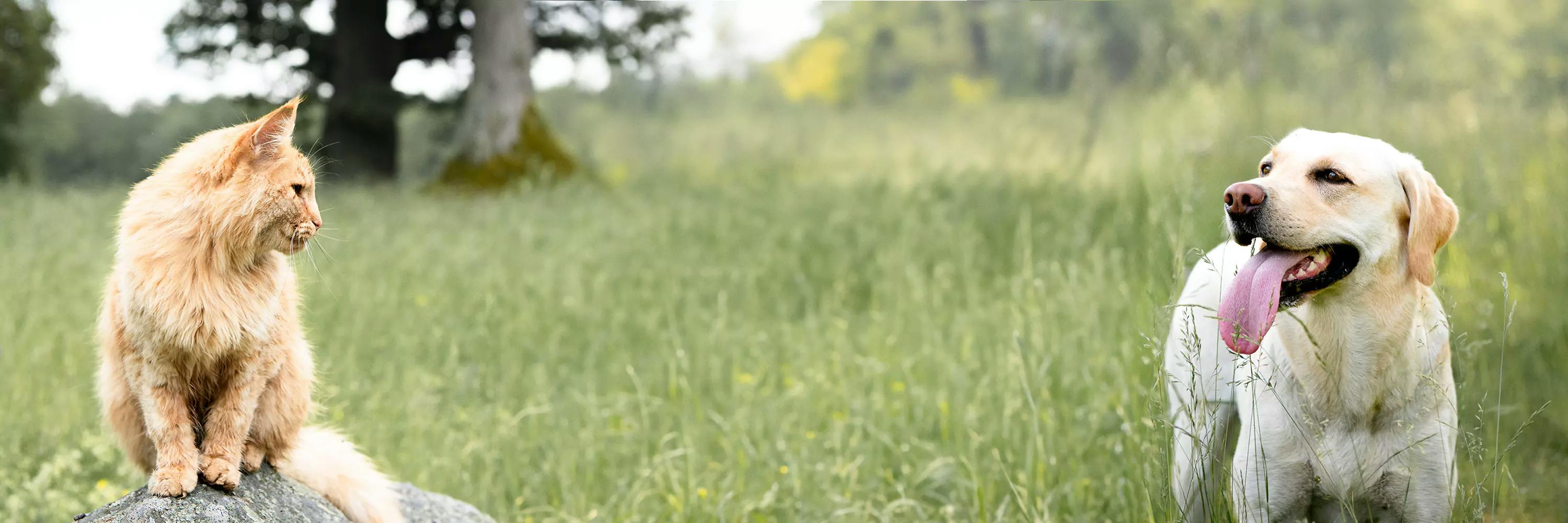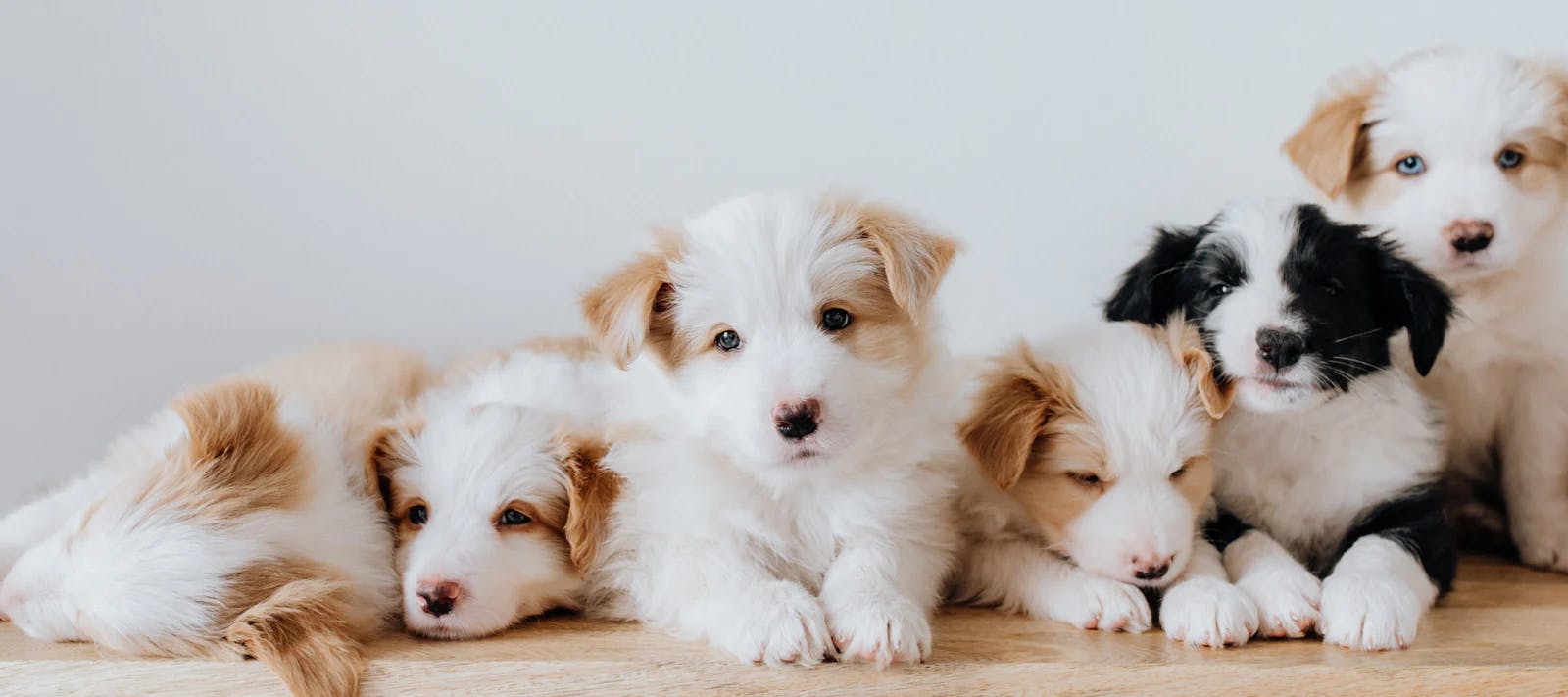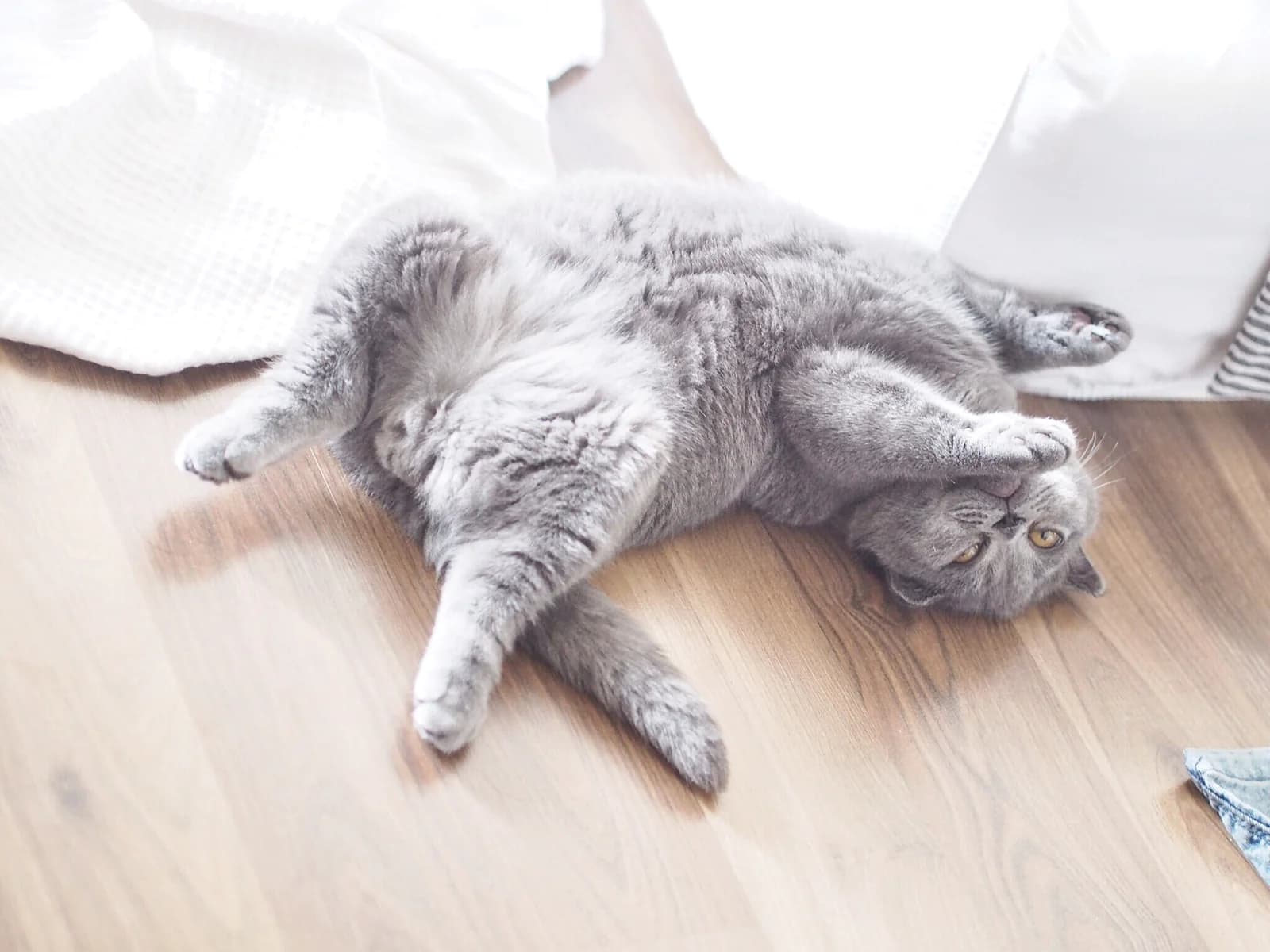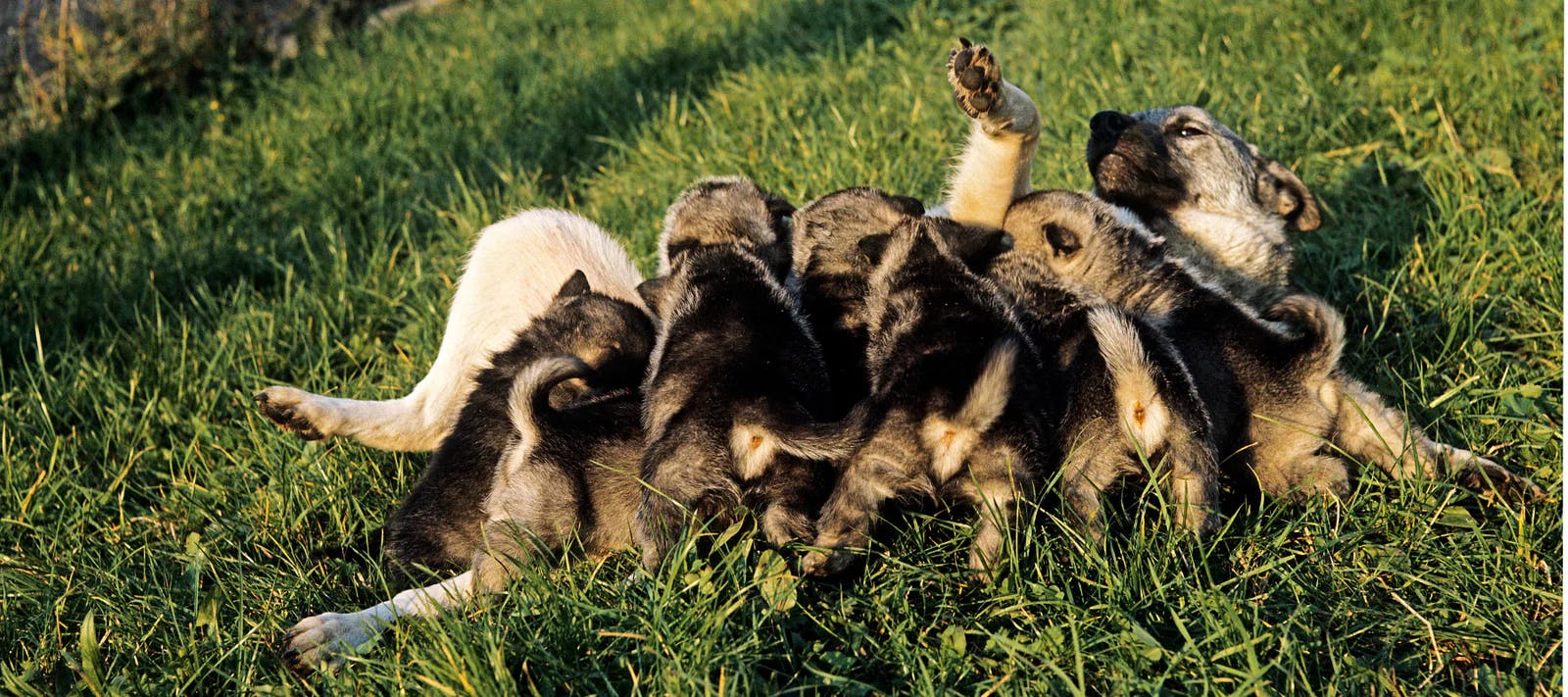Active location:
Select your country:
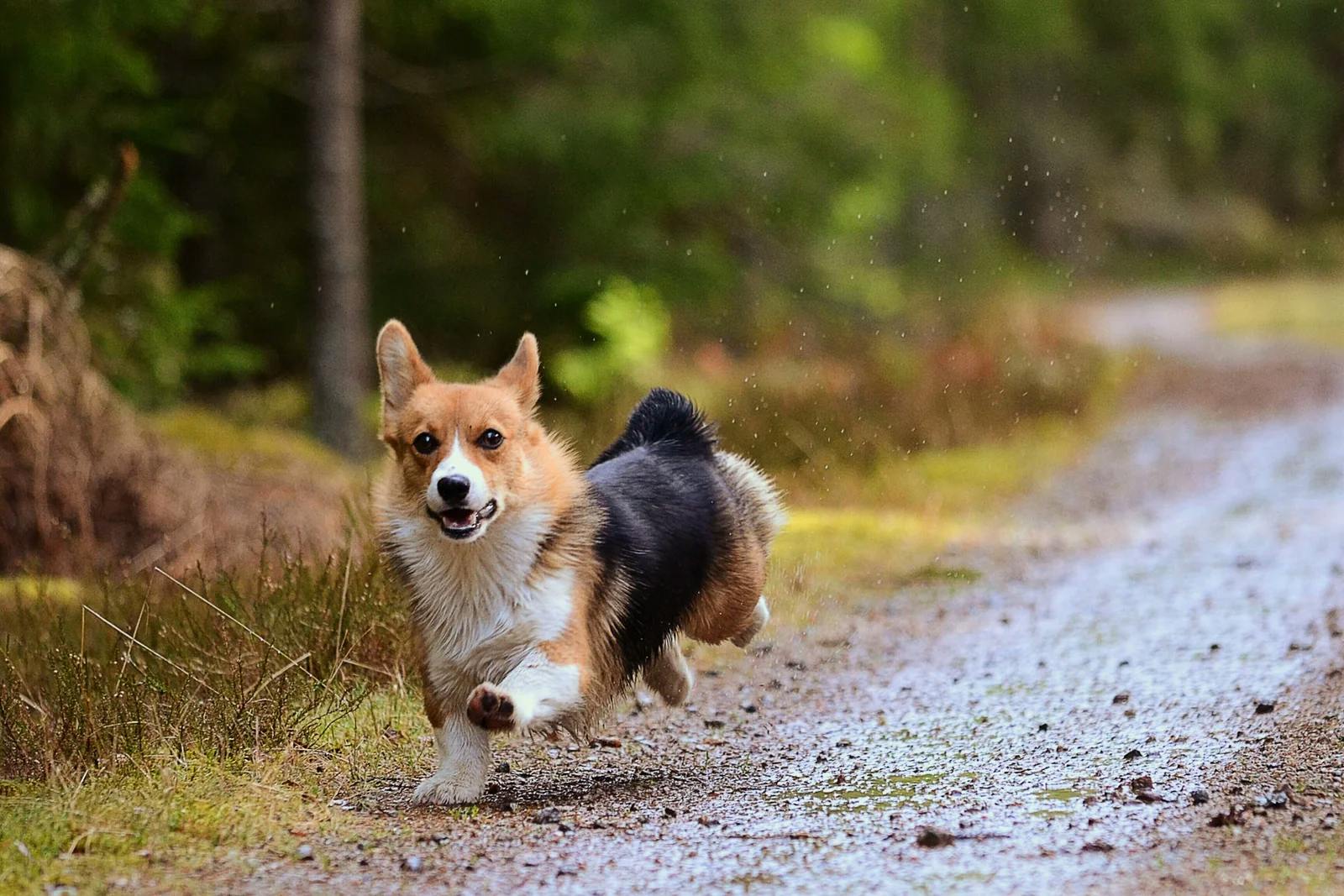
How long is a dog in heat?
Puppy time whizzes by - all of a sudden the little bundle passes six months. Your dog is approaching adulthood, and for those of you who have a female puppy, the first heat is approaching. There can be many questions about this, what is normal and what is not, and what is important to think about? We clear up some of the most common questions about heat here!
What is heat?
A common misunderstanding is that the heat is "the dog's period" - but it is not. The heat is the female's estrus, when she ovulates, unlike humans where menstruation occurs as a result of an egg not being fertilized and the uterus shedding. In other words, the heat is the female's fertile period, which usually occurs twice a year. However, there are large variations; some are only in heat once a year, others up to four times per year.
When does the first heat occur?
Most dogs get their first heat at around 7-12 months of age. Dogs of small breeds often get their heat earlier, and large breeds later. The first heat means that the dog is now sexually mature and can become pregnant. This does not mean that she is ready to have puppies - in Sweden the female must be at least 1.5 years old before she can be mated, as she still needs more time to mature both physically and mentally.
How long is a dog in heat?
The length of the heat usually lasts for about three weeks, but even this can vary greatly between dogs. What we normally call "in heat" are actually the first two phases of the female's fertile cycle - proestrus and estrus.
What does the heat cycle look like?
The female's heat cycle is divided into four parts - proestrus, estrus, diestrus and rest phase, anaestrus.
The heat begins with the proestrus, which is counted from the first day you see a light bleeding. This period lasts approximately 9 days, but can be significantly longer or shorter. During this period, the female's hormone levels change and she becomes more interested in male dogs and spreading her scent by marking territory.
This is followed by the estrus, which also lasts about 9 days, but here too there are large variations between females. During this period, the female ovulates and can therefore mate and become pregnant. In connection with ovulation, the bleeding usually subsides.
After the estrus is over, the female enters the diestrus which lasts for about two months. It is towards the end of this period that the female can show symptoms of phantom pregnancy. This time coincides with when the female would have had her puppies if mated.
After the diestrus there is a rest phase, which lasts until the next heat begins. This period varies in time between females, anything between 3 months up to a year depending on how often the female is in heat.
There is also a phenomenon known as "silent heat". These are heats that do not show clear signs, with for example no bleeding or no swollen vulva, and are therefore difficult to notice. However, even females that have silent heats can become pregnant.
Can phantom pregnancy be prevented?
All females go through the stage of diestrus. In some females, there is no noticeable phantom pregnancy at all at the end of diestrus, while others can start to "build a nest", carry around toys and adopt them as "puppies", and some even get milk production. It is also common for the female to have a poorer appetite or feel a bit generally uncomfortable or depressed.
You cannot prevent phantom pregnancy from occurring, but there are ways to make it easier for the dog. Put away "puppies" that the female adopts, and try to keep her occupied with increasing exercise even if she may feel reluctant. It is also good to try to train as usual, but to lower the demands if the dog is not as focused. Some females become hungrier, while others lose their appetite. Adjust the feed dosage if necessary, or perhaps top it with something extra tasty if she is very reluctant to eat. Remember that the period will pass within a couple of weeks, so try to make it easier for your dog without making it "too big of a deal" as the dog also notices our mood if we signal that something is wrong. Phantom pregnancy is completely normal!
If the period is very difficult for your dog or does not pass after a couple of weeks, contact your veterinarian for help and advice.
When does the dog stop getting in heat?
Females never stop their periods of being in heat - they do not enter "menopause" and are thus fertile throughout their lives. The only time the female will stop ovulating or become phantom pregnant is if she is spayed, when her ovaries are removed.
What should I think about when my dog is in heat?
When the female is in heat, she may experience a slight change in behavior. Some become more tired and have a poorer appetite, others unfocused and harder to connect with during training - it's not so strange, as her thoughts are simply on other things. Continue with your routines as usual, and continue to exercise as normal.
A dog diaper is like a panty you put on the female, with a panty cover in it to keep it fresh. For the sake of the dogs themselves, a dog diaper is not needed as the heat is completely natural and there are no risks associated with them washing themselves, but the protection can facilitate the cleanliness at home. Some females hardly bleed at all, while others so much that it drips. The protection then protects carpets and sofas from stains. Remember to change it so that it stays fresh, take it off when walking and let the dog "air" from time to time. If you don't want to use dog diapers, it can be advised to remove carpets and blankets during the period, and have clean towels available that the dog can lie on in her bed.
To avoid unwanted puppies, you must keep a close eye on your dog during heat, and never leave her unattended or meet intact male dogs. Females in heat can turn into escape artists, so even if you have a female that would normally never run away, even the most obedient dog can have second thoughts if a really interesting male dog is around.
How do I know if the heat is normal?
As mentioned, there are large intervals regarding the length of the heat, how much the female bleeds and intervals between heats. Young females may also have more irregular heat cycles. This is completely normal, but good to note so that you learn what is normal for your dog.
Knowing what is normal for your dog makes it easier to spot if something is off: Is she usually only in heat for two weeks, but now it's been going on for four? Is there a bleeding when she shouldn't be in heat at all? Or has a discharge occurred again, even though the female was in heat a few weeks ago? Does she seem more tired or "off" than normal?
If you notice something unusual or feel unsure about your dog's heat, you should always contact a veterinarian. There are several diseases that can be confused with or be related to estrus, such as urinary tract infection, uterine inflammation, or other diseases in the reproductive organs of the female.
So to summarize and shortly answer the question "how long is a dog in heat?"
The dog is in general in heat for approximately 2-3 weeks, 2 times a year. The heat cycle is divided into four phases, each which can affect and occur a little different in each dog - so observe your own dog and learn what is normal for her.
We hope you learned something new about your female dog from this article, and maybe found some good tips and advice to take with you.


